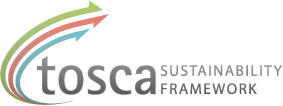Getting started guides
Navigation by keywords
How we work with LCA at AkzoNobel
By Emma Ringström & Sofia Petersson
At AkzoNobel a corporate group, AN Sustainability, are specialists at performing environmental assessments with a life cycle thinking. The LCA methodology is used to perform a variety of different anlyses in order to support the strategic sustainability work of AkzoNobel.
This is though not how it all started. The development of this group, AN Sustainability, are described below.
History
It all started in the early nineties with a couple of employees who had heard about LCA and in 1993 the first LCA was carried out by a thesis worker on alcohol etoxylate. The main part of this project was to make an inventory (collect information) of the processes at the Berol plant in Stenungsund used to produce the alcohol etoxylate as well as for the raw materials used and calculate the environmental impact of these processes.
After this first LCA project more projects followed for other products of the Berol plant, but at this time the work was done by an employee on part time. Studies was also carried out by thesis works. The aim of most projects were to compare new products or processes with old and to identify where the main part of the environmental impact orginated from. The work was time consuming since a lot of information had to be gathered for each project. As help to perform the calculations an LCA software was used. The information gather during the projects for raw materials and processes was also stored in the LCA software and could thereby easily be used again when needed. In the late nineties the LCA team grew from 1 to 2 persons that worked as internal consultants.
Around 2002 a new sense of the importance of sustainability was developed within the AkzoNobel organization and at the same time the LCA team of Akzo Nobel started up the DANTES project, which was a project with the aim of Demonstrate and Assess New Tools for Environmental Sustainability, www.dantes.info together with ABB, Stora Enso and Chalmers University of Technology. This project was partly financed by the EU LIFE-Environment programme. DANTES dealed mainly with environmental activities that are usually characterized as voluntary rather than regulatory. When this project was started up the LCA group grew from 2 to 4 people. During this project a lot of new contacts was established both inside and outside the company. For the implementation of LCA within Akzonobel the most important contact were with other business units within in AkzoNobel and with the Corporate Social Responsibilitydirector of AkzoNobel
These new contacts resulted in that the LCA team has been assissting more and more Business units with environmental assessments on consultancy basis. The contact with the Corporate Social Responsibility director resulted in that the LCA team, now called the Sustainable Development group became responsible for introducing Eco-Efficiency Assessment (EEA) within the whole company.
The decision to implement EEA within the whole company, made at the end of 2005, was mainly based on the belief that EEA is an excellent tool for obtaining figures and goals to make more efficient solutions for the future. After introducing EEA in the company, the carbon and eco footprint of the whole organization of AkzoNobel were calculated. This means that the environmental impact of all the Business Units of AkzoNobel with their key products has been mapped.
In 2011 the Sustainable Development group became part of the AkzoNobel Sustainability with the goal to support the business units in the strategic sustainability work and to develop the sustainbility work of AkzoNobel.
How LCA is used today
The result from an LCA is used to derive eco-footprints and carbon footprints. Eco-footprints are used to get a full picture of the environmental load from a product. The result can be used in both marketing and R&D activities. An eco-footprint may be used as it is or may be verified by a third party for example to get the format required in an EPD (Environmental Product Declaration). The carbon footprint can be used in a similar way as the eco-footprint but focuses on the climate impact of the product. It can be certified in the form of an Climate Declaration. At AkzoNobel we use the information from carbon footprints to calculate the total carbon footprint of the company. This is part of our carbon policy where we have a goal to reduce our total carbon footprint (cradle-to-gate) by 20-25 % per ton of product to the year 2020 compared to 2009.
From an LCI we also perform eco-efficicency studies that compared two or more products on both economical and environmental terms. More about eco-efficicency can be found here.
How LCA studies are preformed
The data collection is one of the most time consuming activites in an LCA. In AkzoNobel we work with a extensive corporate database that assist us in our work. There is also external databases that can be used, the CPM database is one. Often we also need to collect data from suppliers which we often do by using a questionnaire.
Supplier questionnaire 2010 Eco-footprint
A questionnaire is a good way of summarizing the data and make sure that it is complete. But it is not as easy as just sending out the questionnaire, often suppliers need support in filling out the questionnaire correctly.

